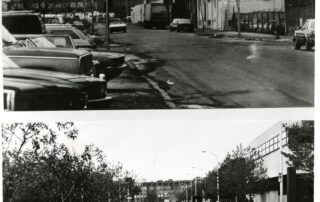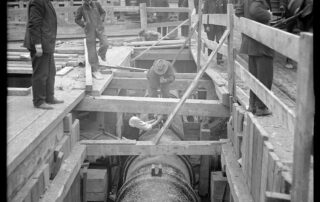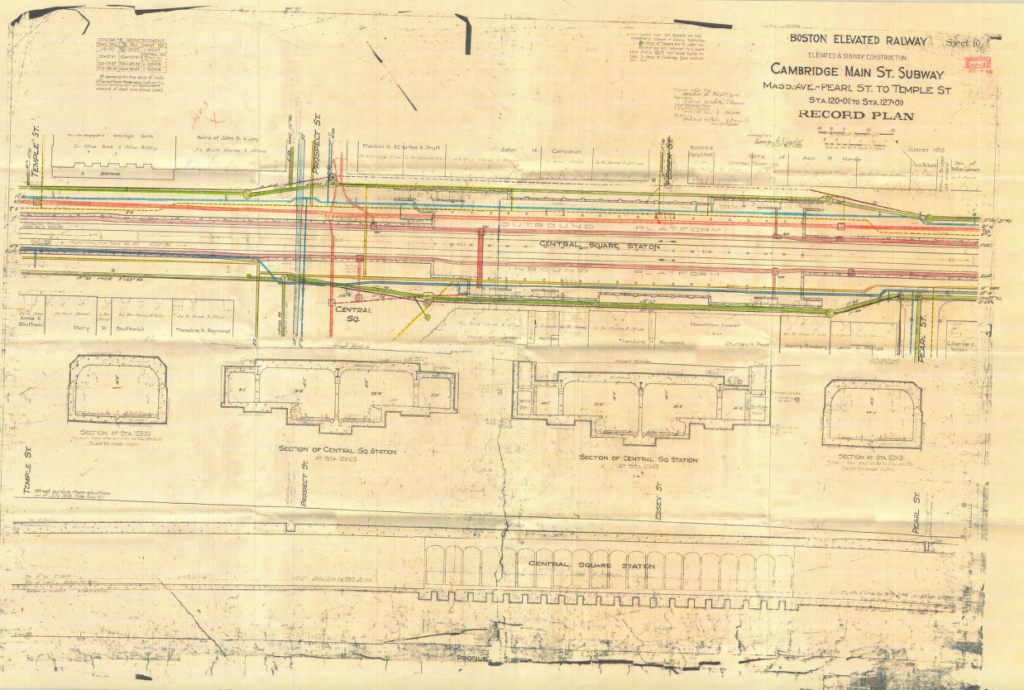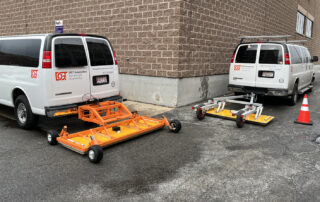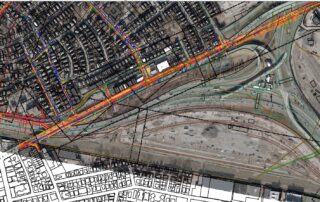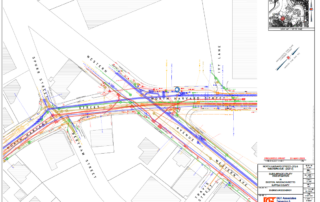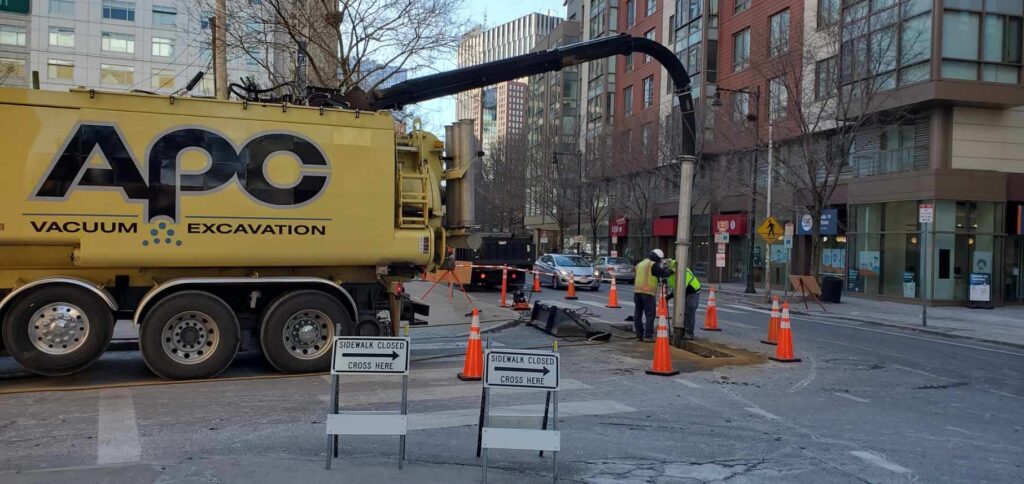Project Spotlight: Providing Subsurface Utility Mapping to Improve Boston’s Electric Grid
Project Spotlight: Providing Subsurface Utility Mapping to Improve Boston’s Electric Grid
Allston, Massachusetts, has been drawing people to its quaint neighborhoods since the 1630s. When Allston became part of Boston in 1874, population growth accelerated, and today, what was once a community of early English settlers is now home to college students and families spanning all walks of life. The city also boasts a growing commercial area and houses Harvard University’s science and engineering campus. With a population of 29,000 and counting, there’s an increasing demand in Allston to expand the city’s access to the electric grids of Boston, Somerville, and Cambridge.
To combat increasing energy needs, Eversource, New England’s leading energy provider, was hired to find the most feasible route to connect new and existing substations to existing powerplants without disrupting or striking subsurface utilities in the process. Building a robust electrical grid has never been more important.
Subsurface Utility Mapping: Reliability, Consistency, and Attention to Detail
Before any official construction proposals could be drafted and presented to Eversource’s project team, the team needed a thorough understanding of the underground utilities surrounding the potential transmission routes. Eversource contracted with DGT to provide over 60 miles’ worth of ASCE 38-02 Quality Level C and D survey data. Subsurface Utility Mapping (SUM) at Quality C and D levels is considered low stakes as it relies on existing records for information and is only surveying aboveground utilities. This level of survey data provided Eversource with a general understanding of utility congestion along the potential subway routes and a more complete picture of which underground stakeholder would be involved before investing in higher levels of SUM.
With any large-scale project, project owners often utilize multiple consultants to allow for a range of perspectives and expediency. However, having more cooks in the kitchen doesn’t always result in better outcomes. Project owners that utilize multiple providers, especially for one specialty, can end up with inconsistency in both the quality of work and the processes in place by each consultant. To streamline data gathering, work product consistency, and client communication, Eversource hired DGT as the sole provider of underground utility mapping for the entire project. As with all DGT projects, we remained committed to sharing project deliverables every Friday. DGT prides itself on being reliable and consistent throughout the project lifecycle.
Data Collection for Designers
During the next phase of the project, surveying began with the use of photogrammetry to capture a large-scale aerial photo of the potential routes scouted by Eversource. This high-level view of the streets allowed for quick visibility of any major obstacles such as manholes, buildings, and other key planimetric details. DGT then conducted ground survey control to establish control networks throughout the streets involved. Attention then shifted to collecting legacy data from both public and private sources, including GIS data from the city of Cambridge, Boston Water and Sewer, National Grid, and many other asset owners. In total, DGT collected over 10,000 files of the underground and compiled and presented the records in a single uniform composite utility plan, in CAD format, to Eversource’s design teams. These files provided Eversource with the information they needed to eliminate some of the routes and focus on the more practical ones, therefore helping Eversource make informed decisions early in the project.
Eversource then handed the survey data to a third-party design firm that specializes in energy project engineering design. That team quickly got to work analyzing the most feasible routes for the power line alignments. Five routes were selected and shared with DGT to perform another round of surveying at a higher quality level.
Capturing ASCE 38-02 Quality Level B data, in comparison to Quality Levels C and D, is much more time-consuming and requires intensive investigations. Additionally, the staffing and technologies required to conduct such an investigation are more laborious. With this in mind, DGT set out to locate and map the five final routes in a choreographed fashion with multiple crews using handheld EMI equipment, pushcart Ground Penetrating Radar (GPR) systems, and survey locating. The results were represented in comprehensive utility maps.
One of the key components to DGT’s success on these types of major projects is the verification of utility locations using GPR technology. This wide-array, multifrequency, high-speed data acquisition technology, often referred to as radar tomography, provides an extra level of care and detail in the plans. While it’s much easier to trace the active facilities shown on asset owners’ underground drawings, many project routes have a history dating back over 200 years and don’t give up their secrets easily. The wide-array 3D GPR system provides DGT with a depth of detail not normally found in utility maps. Buried vaults, undocumented tunnels, abandoned systems, unrecorded new telecommunication networks, and layers of history are often exposed and included in DGT submissions. While these anomalies may not seem extremely important, the details are often contributing factors that trigger project delays, project claims, and escalating project costs. Uncovering as many surprises as possible for the design team means the designs will include clearer and more concise information in construction documents. Upon completing the Quality Level B survey, which included radar tomography, DGT presented the findings to the design firm for more detailed analysis.
Where the Project Stands
Today, as the final stage of the project, DGT is in the process of completing ASCE 38-02 Quality Level A surveying for the top five chosen routes. This is the highest quality of underground data, which uses vacuum excavation to precisely locate and map subsurface utilities along the project’s path and mitigate conflicts arising from unmapped underground structures during the design phase. For this project, DGT will have completed thousands of vacuum test holes and trenches to obtain precise underground measurements and uncover potential utility conflicts. Upon completion, which is projected to be at the end of summer 2022, it will be up to the design firm to follow the appropriate channels to receive the stamp of approval on a major infrastructure project of this size. This will consist of talking to all the affected underground asset owners, university officials, city officials, and other community stakeholders that will be impacted by the added transmission routes.
It will likely take the design firm a full calendar year to analyze all of our mapping deliverables. Once they select the final route and receive approval from city officials, the last stage of the project will consist of constructing the new transmission routes. While we know this will likely take years to complete, we are hopeful that Eversource will bring DGT in to complete a round of as-built updates to the subsurface utility mapping that has been generated.
DGT is proud to be part of an intricate project that improves the lives of Bostonians and allows for continued safe and reliable access to the electric grid.
To learn more about DGT’s Subsurface Utility Mapping (SUM) work, visit our website.

